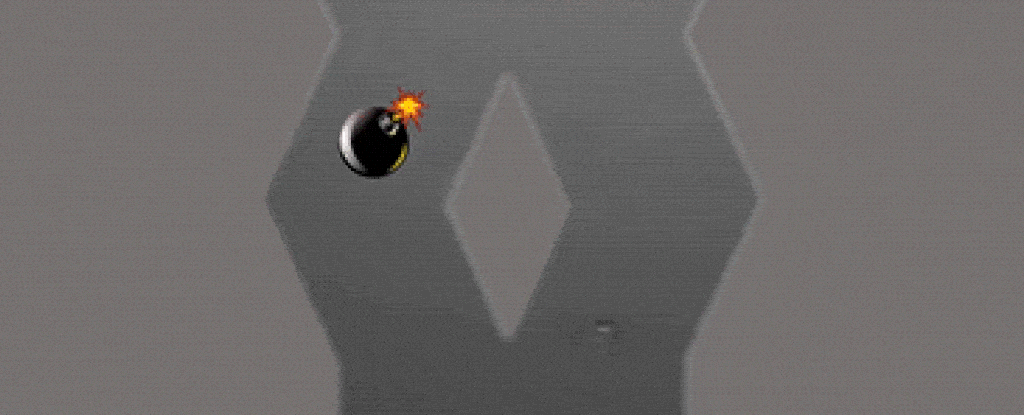
Quantum physics is inherently perplexing, to the extent that we resort to imagining concealed cats in boxes and analogies of spinning coins just to grasp its principles.
Even within our classical world, where physics is more intuitive, glimpses of quantum-like behavior can be depicted using relatively straightforward scenarios.
Scientists conducting experiments with minuscule oil droplets flowing down two neighboring channels in a fluid bath subjected to vibrations have observed that the droplets’ behavior aligns with a well-known quantum thought experiment.
“It turns out that this hydrodynamic pilot-wave experiment exhibits many features of quantum systems which were previously thought to be impossible to understand from a classical perspective,” says John Bush, a fluid dynamicist at Massachusetts Institute of Technology (MIT).
Bush and his collaborator, MIT physicist Valeri Frumkin, replicated the Elitzur-Vaidman bomb tester – a renowned illustration of interaction-free measurement – demonstrating the ability to extract details about one object’s quantum state through the gentle interaction with another object’s wave, without perturbing the delicate nature of either.
This method has been employed in low-intensity imaging technology. Despite its applications, there remains no consensus on the physical interpretation of what ‘interaction-free’ truly means.
In the bomb tester experiment, a photon undergoes a simultaneous split into two states (a superposition). These two states travel down one of two channels, and fifty percent of the time, one of those channels contains a ‘bomb’ – an analogy for an object capable of disrupting the superposition by absorbing a photon and thereby destroying its quantum state in the process.
If a photon emerges from the system, likely, it didn’t encounter any bombs. The fascinating aspect of quantum physics is that the state of the split photon, upon being recombined into a single entity, can also reveal whether the bomb was present or not – even when the photon took the other channel – all without triggering the bomb.

This may seem perplexing from the perspective of classical physics, but it aligns with the principles of quantum physics. In simple terms, the bomb introduces interference with the probabilities generated by the superposition of the photon. This interference becomes apparent when the wave-like nature of the photon is measured at the end.
Hence, it’s unexpected to observe the same outcome in this investigation within a classical configuration.
Instead of photons, droplets assumed the role, and the ripples they generated in the liquid mimicked the superposition probabilities – if those spreading ripples encounter the “bomb,” it influences the droplet as the two channels converge, even if the droplet itself traveled through the other channel.
Technically, this experiment shares more similarities with an interpretation of quantum experiments known as pilot-wave theory, in which interacting ripples bearing minuscule surfing particles dictate the characteristics of an object.
Statistically, the classical experiment aligned with the Elitzur-Vaidman bomb tester. According to the researchers, this demonstrates a connection between the stable, tangible world of classical physics and the more ambiguous, uncertain quantum realm.
This contributes to our comprehension of why quantum phenomena, such as waves of possibility, seem to ‘collapse’ into distinct states.
“Here we have a classical system that gives the same statistics as arises in the quantum bomb test, which is considered one of the wonders of the quantum world,” says Bush.
“In fact, we find that the phenomenon is not so wonderful after all. And this is another example of quantum behavior that can be understood from a local realist perspective.”
The research has been published in Physical Review A.





